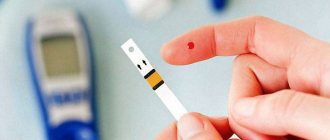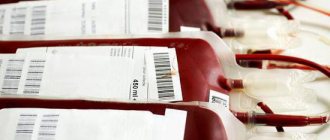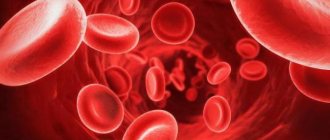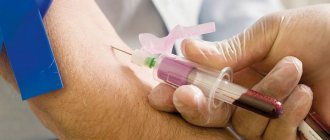- Photometric instruments.
- Electrochemical devices.
- Spectrometric glucometers.
Based on the determination of glucose levels in accordance with the measurement of the color of the reagent. Depending on the amount of sugar in the blood, the color of the reagent applied to the test strip changes. The optical system built into the glucometer evaluates the color intensity, determining the amount of glucose based on this indicator. This measurement method is considered inaccurate and is currently practically not used.
The measurement is also based on the reagent applied to the test strip. When a drop of blood containing glucose touches the reagent, a chemical reaction occurs that stimulates the accumulation of electrical potential. Based on the strength of this potential, the device determines the concentration of sugar in the blood. Almost all modern blood glucose meters operate on the electrochemical principle. A more advanced subtype of the electrochemical measurement method is coulometry. The process is based on determining the total electronic charge that is released as a result of the interaction of a drop of blood with a reagent on a test strip. The main advantage of coulometry is the minimum amount of blood required for analysis.
This is an improved type of device that works non-invasively, that is, a drop of blood is not required for analysis. The measurement is carried out using a laser, which selects the glucose spectrum from all spectra. To date, this technology is considered unfinished. During the analysis process, glucometers make many mistakes, producing low-accuracy results.
Rules for using a glucometer
To ensure accurate glucometer readings, it is important to follow certain rules.
Calibration
Most blood glucose meters require you to calibrate the device before taking a measurement. Don't neglect this procedure. Otherwise, the received data will be incorrect. The patient will have a distorted picture of the course of the disease. Calibration takes just minutes. Details of its implementation are described in the instructions for the device.
Measurement three times a day
Blood sugar measurements should be taken before meals, after meals and before bed. If the analysis must be done on an empty stomach, then the last snack is acceptable 14–15 hours before the procedure. For type 2 diabetes, it is recommended to take measurements several times a week. But insulin-dependent diabetics (type 1) should monitor glycemia several times a day. However, one should not lose sight of the fact that taking medications and acute infectious diseases can affect the data obtained.
Monitoring indicators
If inconsistencies are noted in the device readings, it is necessary to re-test. Results may be affected by insufficient blood from the puncture site and unsuitable test strips. To eliminate the first reason, it is recommended to wash your hands in warm water before the analysis. After the puncture, the finger should be lightly massaged. Do not squeeze out blood under any circumstances.
Expiration date of consumables
Before using test strips, be sure to make sure that they are within their expiration date and have been stored under favorable conditions: in a dry place, protected from light and moisture. Do not touch them with wet hands. Before testing, make sure that the code on the device screen matches the numbers on the test strip packaging.
Correct operation
To extend the life of your glucometer, monitor its condition: clean the device on time, change lancets. Dust particles may negatively affect the measurement results. If there are several diabetics in the family, each should have an individual meter.
Decoding the results
When assessing the indicators, it should be taken into account that plasma contains 10–11% more dextrose. The laboratory recommends multiplying the readings by 0.89 or dividing by 1.12.
If the doctor said to take into account the results in plasma, there is no need to multiply or divide. For example, the device showed 5.04, which means blood sugar is 4.5 on an empty stomach and no more than 8.96 2 hours after eating, that is, in capillary blood - 8.0.
The accuracy of the device can be checked in special laboratories; they often overestimate or underestimate the indicators.
Table. Blood sugar levels by age.
- Maximum blood sugar level in diabetes in a diabetic: normal limits
| Age | Fasting mmol/l | After meal | |
| After 1 hour, mmol/l | After 2 hours, mmol/l | ||
| 2 days–4 months 3 weeks | 2,8–4,4 | not higher than 4.6 | 3,0–4,4 |
| 1–5 years | 3,3–5 | no higher than 5.5 | 3,5–6,0 |
| 5–11 years | 3,3–5,5 | ||
| 12-14 years old | 3,3–5,6 | 3,9–7,8 | |
| 14–60 years | 4,1–5,9 | ||
| 60–90 years | 4,6–6,4 | ||
| 90 years and older | 4,2–6,7 | ||
| In pregnant women | 3,3–5,3 | no higher than 7.7 | not higher than 6.6 |
How does Smart Backlight work in the Contour Plus One glucometer?
Smart Light instantly lets you know when your blood glucose reading is within/above or below your target range.
- The color indicator lights up in three colors, providing instant and clear feedback.
- The colors are intuitive, using the “traffic light” principle - red (danger) for hypoglycemia, yellow (caution) for hyperglycemia, green for the target range. It is possible to configure target values individually and receive feedback on them using color indication.
- The smartphone application immediately displays the result with a similar color and prompts for action, which helps to make the right decision in a critical situation.
Blood sugar levels for diabetes
Normal blood sugar readings on a glucometer depend entirely on how much insulin the body produces. Insulin is a hormone produced by the pancreas. The task of the hormone is to control the level of sugar entering the cells of the organs.
It happens that the pancreas does not produce enough insulin or the hormone is no longer able to interact with cells. As a result, hyperglycemia occurs.
Hyperglycemia is a chronic increase in blood sugar levels, which results in diabetes mellitus.
Insulin is responsible for moving glucose from the blood to the organs. In a healthy body, this process proceeds without complaints or obstacles. In a sick person, glucose is not transported to the organs, due to which it continues to be produced and remains in the blood. When the blood becomes oversaturated, it thickens. In this regard, there are difficulties in saturating the organs with oxygen and other nutrients.
One way to suspect the disease is through characteristic symptoms:
- 24/7 thirst
- dry mouth,
- frequent urination,
- weakness throughout the body,
- vision weakens,
- feeling hungry, even after eating.
A more dangerous condition is when glucose levels rise sharply after eating. Under such circumstances, a person is accompanied by symptoms:
- wounds that do not heal for a long time,
- desire to eat, even on a full stomach,
- suppuration on the skin,
- Gums begin to bleed
- weakness in the body,
- reduced performance.
A person remains in this state for up to several years and has no idea that he is sick.
More than 50% of people are unaware that they already have type 2 diabetes.
- Methods for determining blood sugar at home - with and without a glucometer
One way to suspect the disease is through characteristic symptoms:
- 24/7 thirst
- dry mouth,
- frequent urination,
- weakness throughout the body,
- vision weakens,
- feeling hungry, even after eating.
A more dangerous condition is when glucose levels rise sharply after eating. Under such circumstances, a person is accompanied by symptoms:
- wounds that do not heal for a long time,
- desire to eat, even on a full stomach,
- suppuration on the skin,
- Gums begin to bleed
- weakness in the body,
- reduced performance.
A person remains in this state for up to several years and has no idea that he is sick.
More than 50% of people are unaware that they already have type 2 diabetes.
This happens because most patients do not pay attention to symptoms that indicate the development of pathology in the body. To avoid complications, it is recommended to regularly check your blood sugar levels with a glucometer.
By age
Regardless of gender, there are normal values for each age category. The indicator is expressed in mmol/l.
Jumps in glucose are also associated with menopause or an interesting position of a woman.
An important point in the procedure is blood sampling. To obtain an accurate result, it is recommended to follow the following recommendations:
- How is blood sugar measured: units and designations
- come for the test in the morning, on an empty stomach,
- after the last meal, a period of 8 hours or more must pass,
- eliminate stressful situations,
- 2-3 days before the test, do not eat heavy food,
- 24 hours before the test, do not smoke or take medications.
In a healthy body, the normal blood sugar level when measured with a glucometer does not exceed 5.5 mmol/l. If the number increases to 5.9 mmol/l, diabetes is likely to develop. These results apply to capillary blood. 6.1 mmol/l or more in venous blood indicates the development of pathological reactions in the human body.
Table for measuring blood sugar depending on age category.
| Age | Glucose level |
| 2 days – 1 month | 2,8 – 4,4 |
| 1 month – 14 years | 3,3 – 5,6 |
| 14 years – 60 years | 4,1 – 5,9 |
| 60 years – 90 years | 4,6 – 6,4 |
| 90 years or more | 4,2 – 6,7 |
If the doctor doubts the results, he will order a glucose tolerance test.
During the day
If you follow all the doctors’ recommendations, your glucometer readings for diabetes will show values close to normal. Normal in the human body:
- In the morning before meals. 3.6 – 6.1 mmol/l for a healthy person. 6.1 – 7.2 for a diabetic.
- The glucometer reading after eating in the morning is 8 mmol/l. Up to 10 mmol/l for a diabetic patient.
- The normal glucometer reading before bed is 6.2 – 7.5 mmol/l.
If the blood sugar value does not correspond to the table standards and shows below 3.5, you should immediately call an ambulance. This condition causes coma.
The body is unable to cope with vital functions due to a lack of energy in the organs. If left untreated, death is likely.
Results
Checking your glycemic level at home using a glucometer is an integral part of the life of a patient with diabetes. Thanks to this, a diabetic can control his condition, correctly calculate the dose of medication, and take timely measures to prevent critical risks.
The measurement results must be saved to a computer (or recorded) in the “Diabetes Diary”. Analysis of the patient’s records will help the doctor analyze the dynamics and predict the course of endocrine pathology, and, if necessary, adjust treatment tactics.
Against the background of independent measurements, one should not forget about regular visits to the endocrinologist and donating blood in the laboratory. The accuracy of laboratory diagnostics is always higher than that of portable glucometers.
What is total sugar control?
To know how the body reacts to the prescribed diet and medications, you need to conduct careful self-monitoring of sugar concentration. Therefore, the device often takes measurements, namely:
- immediately after sleep;
- before breakfast;
- 5 hours after insulin injection;
- always before meals;
- after any meal after 2 hours;
- before sleep;
- before and after physical labor;
- after stress;
- if you suspect that your sugar has changed;
- in the middle of the night.
All numbers are entered into a notebook. This helps figure out what is causing the sugar spikes.
Clear interface
Can a glucometer work in conjunction with a mobile phone as a self-monitoring diary?
The modern Contour Plus One meter can communicate with the Contour Diabetes mobile phone application, which directly records data from the Contour Plus One meter using Bluetooth® technology. In addition, in this application you can enter data on nutrition (even take a photo of your breakfast, lunch or dinner), doses and times of administration of insulin or glucose-lowering drugs, time, intensity and duration of physical activity, etc. The Contour Diabitis application tracks levels blood glucose, compares them with the time of insulin administration, nutrition and physical activity, identifies typical fluctuations in blood glucose and tells the user what exactly could be causing these fluctuations.
How to lower glucose levels
To reduce high glycemic levels, you must adhere to the following rules.
- Follow a strict diet. Eliminate fried, smoked, salty and spicy foods from your diet. Reduce the amount of flour and sweets. Include vegetables, cereals, lean meat and dairy products in the menu.
- Do physical exercise.
- Visit your endocrinologist regularly and listen to his recommendations.
- In some cases, insulin injections may be required. The dose of the drug depends on weight, age and severity of the disease.
The World Health Organization (WHO) recommends testing every 3 years after age 40. If you are at risk (overweight, have relatives with diabetes), then annually. This allows you not to start the disease and not lead to complications.
Don't forget about memory!
The expert considers the memory of a glucometer to be one of the important parameters: “It is important that the device remembers the result, date and time of the analysis. For example. Our Satellite Express stores up to 60 of the latest results. For the attending physician, and the diabetic himself, it is very important to be able to perform a statistical analysis of measurements, as well as systematize data for further monitoring of indicators. This makes it possible to predict events to some extent and make important decisions related to treatment adjustments.”










